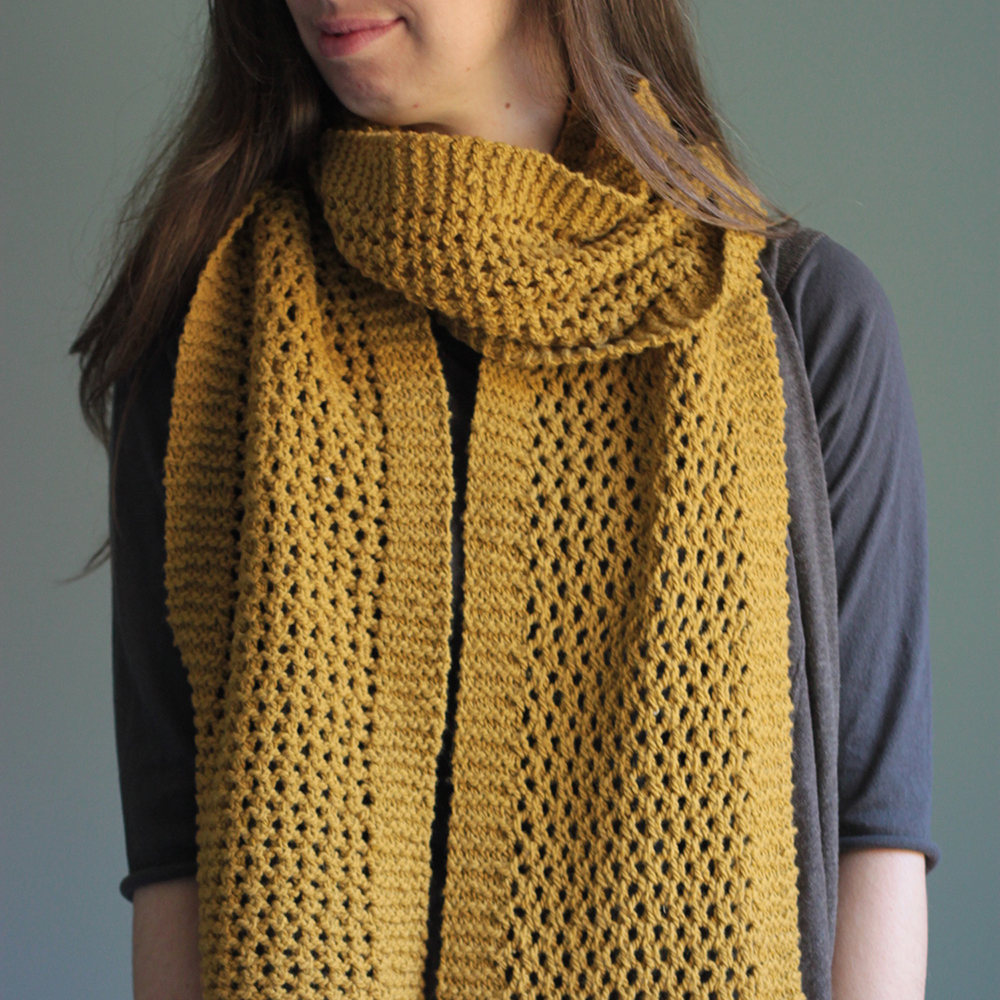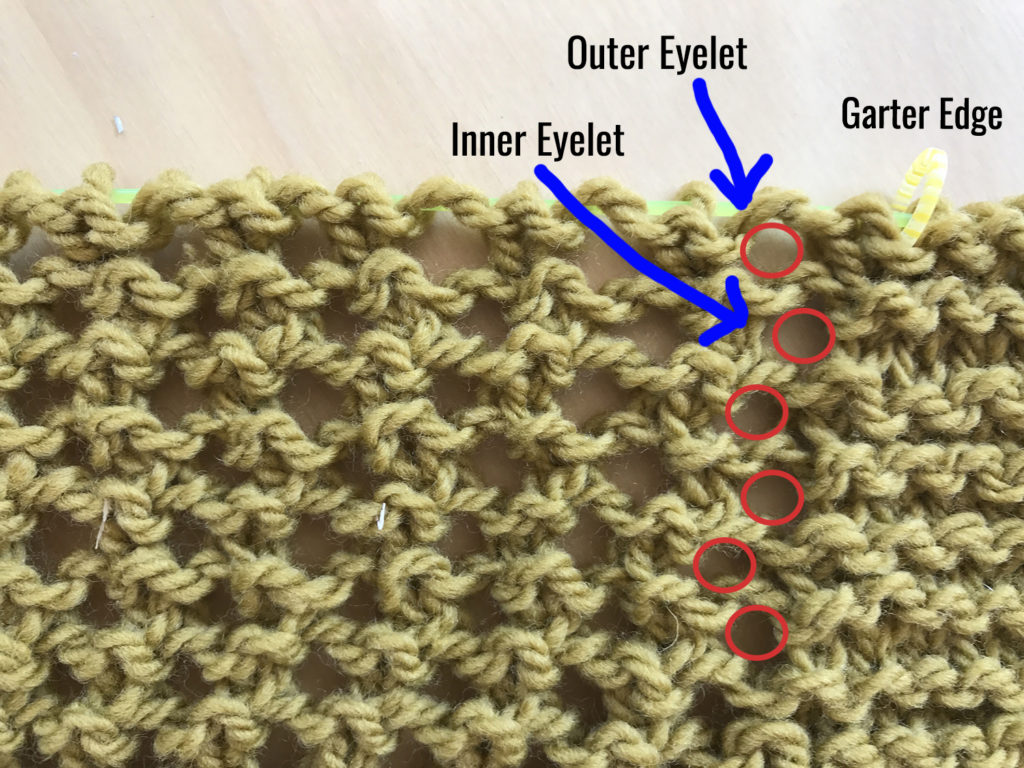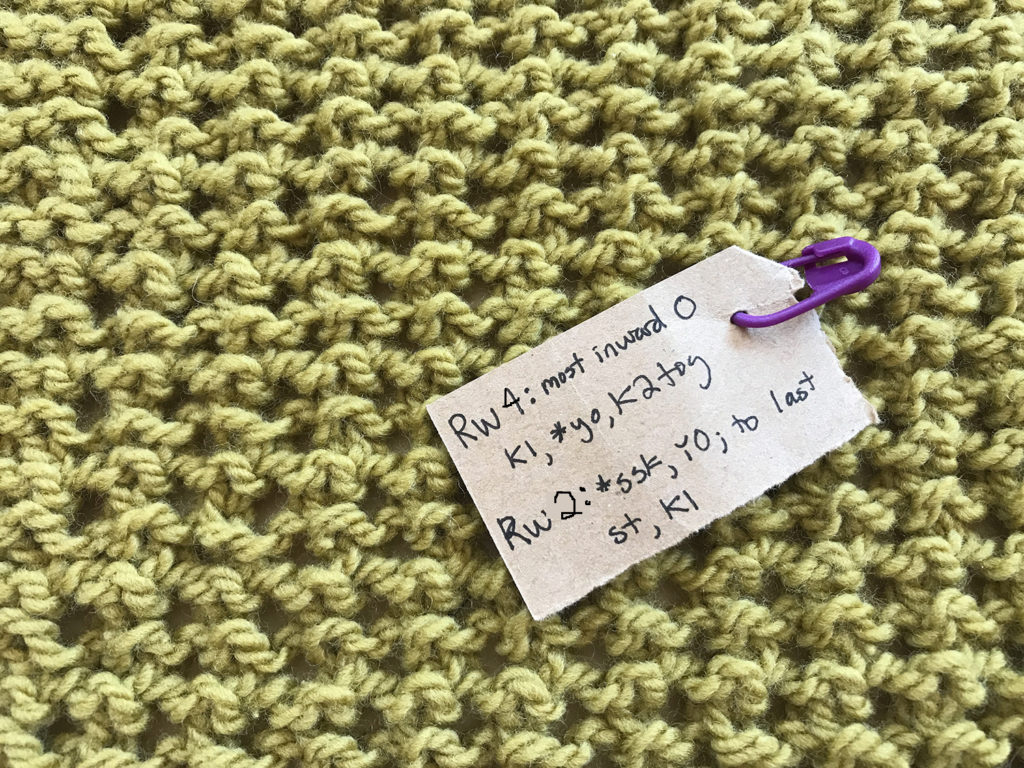Garbanzo Tips

My Garbanzo scarf/wrap has a textured eyelet stitch pattern that is really fun to knit and features a 4 row repeat. Every-other-row is just a knit row, so you really only have 2 rows that you need to ‘pay attention’ during and these are the eyelet rows. Since this accessory is pretty long, you’ll be working on this 4 row repeat for a while, so wouldn’t it be great to be able to memorize those 2 unique rows so you don’t have to check off each time to finish a row? Here’s the way I did it – all it requires is that you learn to read your knitting a bit.
After you have a couple of inches of work, you’ll notice that when you are about to start a Row 2 or Row 4 (these are the 2 rows that involve YO’s and ssk’s or k2tog’s), that when you look at previous eyelet rows, they appear staggered when you compare it to your garter edge on the right side. What I mean is, you’ll see an eyelet that appears close to the garter edge, and then the next eyelet above it appears more to the left. And this staggered pattern continues as you go up the scarf. See this graphic below:

Where I put red circles are the edge eyelets and as you can see they are staggered – there is an innermost one and then an outer one. So the key is to know which row creates which eyelet. For this pattern, Row 4 creates the innermost eyelet and Row 2 creates the other one. So in this example above, since the top eyelet is an outer one, that means the next one should be an innermost one…so that means my next row is a Row 4!
Here’s another tip – so now that you know how to read your knitting to tell you whether or not your next eyelet row should be a Row 2 or Row 4, here’s a great way to know how those rows are worked without having to always carry your pattern around with you – create a cheat sheet!:

Simply take some paper, write out the stitch pattern for those 2 rows on it, then take a removable stitch marker (or safety pin) and attach it to your work. Now there’s no need to always have your pattern handy – the main details of what you need to remember will follow you wherever you take your project!
As I mentioned above, this is how to tell which of the two eyelet rows you should work. If you’re not sure if you are to work an eyelet row or a knit row, well that’s easy. If you see that you have a series of YO’s on the row JUST worked (you can tell because these appear just as loops on the needle), then you know the next row is just a knit row. Another tip – if you use the technique above of attaching a ‘cheat sheet’ to your project, attach is to the side of the work that is always the eyelet row side!
